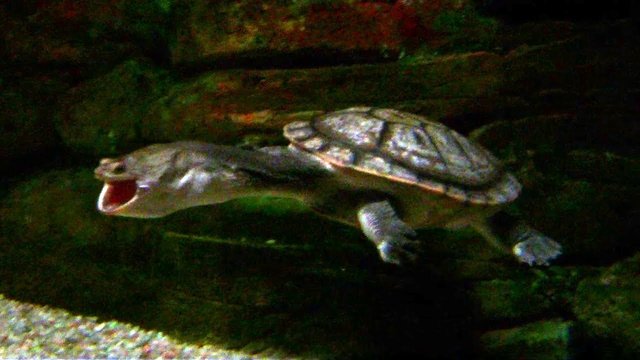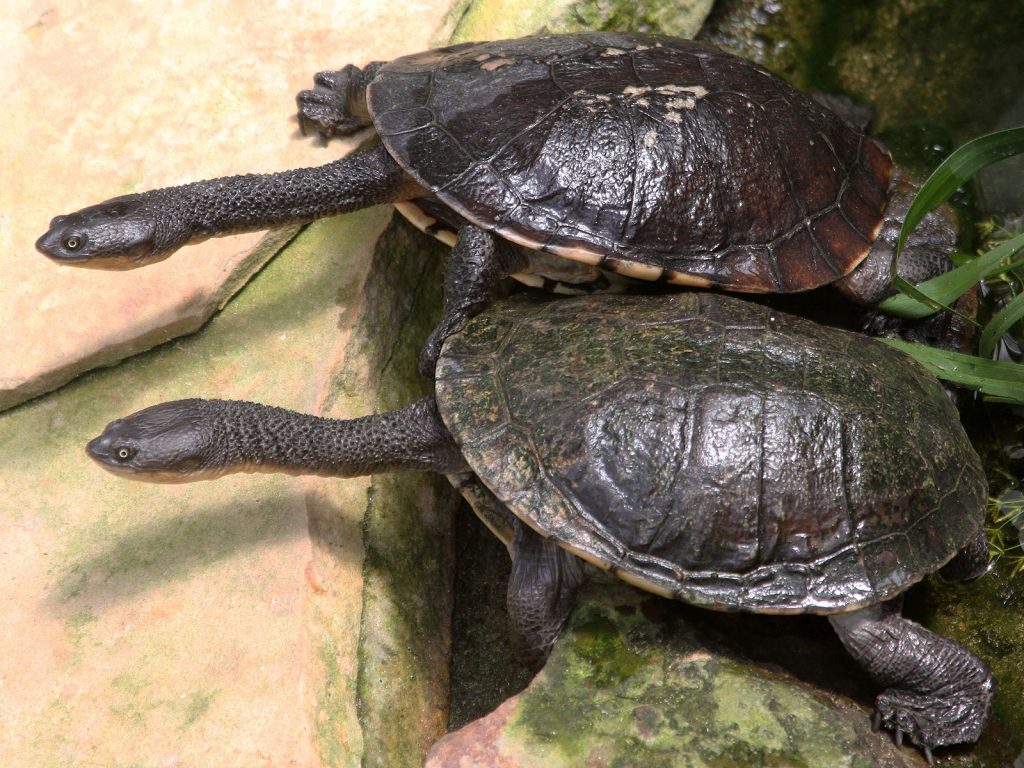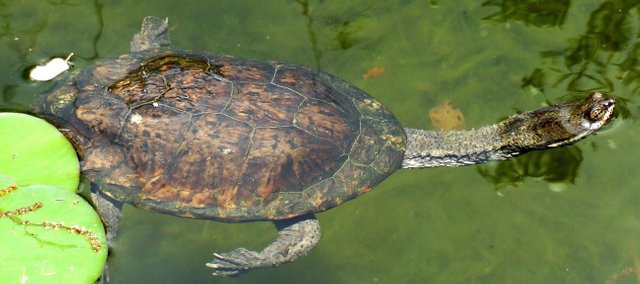Amazing, snake's neck turtle.
These turtles hide their neck towards one side of the body, they do not put it inside the shell like other turtles.
What is it?
Inhabits Australia. The snake-necked turtle reaches 27 centimeters in length. It has an oval carapace, flattened and elongated, with a smooth back edge (and yellowish spots on both sides). Brown usually can be lighter or darker, depending on the specimen. The plastron is long and cream, while the head is flattened, gray or brown and with a series of spots or wavy lines of lighter colors. It also has a large bright patch in the area where the eardrum is, as well as a narrow snout and a maxilla without upper notches.
The males have the longest and thickest tail, and the flattest shell, then the females. It is a strange species, what characterizes it is its neck, equivalent to three-quarters of its shell (hence its name). Unlike other turtles, it does not hide its head inside the carapace: it folds the neck towards one side of the body. It is not known exactly what the function of such a neck is, which allows it to remain submerged several centimeters in the water while it takes out its head to breathe.
Among all the turtles in the world, the snake-neck turtle is a truly curious species.

Habits and feeding of the snake-necked turtle
Its habitat is wooded areas, with slow water, usually streams, rivers or lakes. They are semi-aquatic specimens, they like to leave the water to sunbathe and increase their body temperature. They change habitat frequently, being able to move long distances to find those environments that they consider most adequate in order to survive.
These chelonians have diurnal habits, they are solitary animals and their main source of food is fish, although they also consume amphibians, snails, crustaceans, small invertebrates and even carrion.
.jpg)
Reproduction
The males reach their sexual maturity over 8 years, the females from 10 years. They lay their eggs near the edge of the water, specifically in holes that the progenitor carefully builds; the laying consists of between 10 and 25 eggs and the incubation lasts 120 to 150 days.
The reproduction of this species takes place between the months of November and February. The laying is done in the water or in areas near rivers and ponds. The incubation takes place at high temperatures (between 27 ºC and 33 ºC), and ends with the birth of the calf at 90 days. The average length of the shell of the young is about 35 millimeters; the weight, six grams.

Did you know?
Semi-aquatic, this turtle spends a lot of time in the bed of the rivers, while looking for fish to feed. It has interdigital membranes that facilitate swimming.
